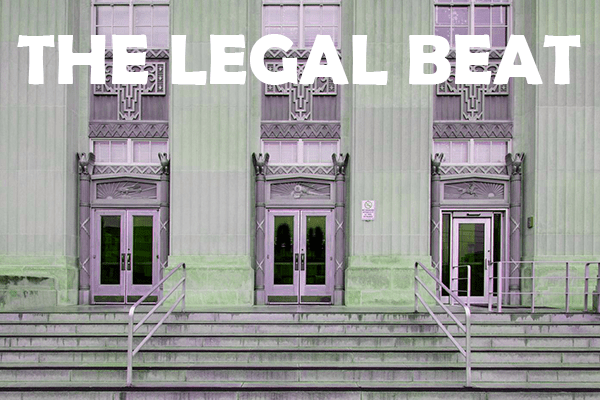|
RCBJ-Audible (Listen For Free)
|
The Village of New Hempstead’s 2020 Comprehensive Plan, 2021 Zoning Amendments and Map Tossed By Court
THE LEGAL BEAT
Two years after a group of plaintiffs, including the Hillcrest Fire Company #1, the Kearsing & Edwards American Legion Post 1600, and several local residents of the Village of New Hempstead filed a lawsuit in Rockland County Supreme Court seeking to void the Village’s Comprehensive Plan, the zoning amendments derived from the Comprehensive Plan and the Village’s Zoning Map, Justice Sherri Eisenpress sided with the plaintiffs against the Village.
 On January 10th, Eisenpress voided the 2020 Comprehensive Plan, the 2021 Zoning Amendments and the Village Zoning map, and sent the Village of New Hempstead back to the drawing board to start over. The order was largely based on the Village’s failure to comply with various legal and procedural requirements in New York State law.
On January 10th, Eisenpress voided the 2020 Comprehensive Plan, the 2021 Zoning Amendments and the Village Zoning map, and sent the Village of New Hempstead back to the drawing board to start over. The order was largely based on the Village’s failure to comply with various legal and procedural requirements in New York State law.
Plaintiffs originally charged that the Village ignored its legal obligations under both the State Environmental Quality Review Act (SEQRA) and the General Municipal Law (GML) that required the Village to allow the County Planning Department to undertake a meaningful review of the Village’s proposed Comprehensive Plan. Plaintiffs sought declaratory relief – essentially a court order declaring the actions taken by the Village to be void and of no effect.
The changes to the Comprehensive Plan, according to the Village, were intended to increase the community’s housing stock. The plan offered developers increased density in exchange for commitments to preserving open space, creating new zones and overlays on existing zones with increased density for residential development.
In a scathing opinion, Eisenpress detailed the failures of the Village Board of Trustees, saying that a resolution effectively amended the zoning map to include zoning designations that did not exist, were undefined, and were not codified in the Village Code. She referred to Planned Unit Development Zones, Single Family and Multi-Family Cluster Overlays, and the Fairway Park Village Center Zone that were never legally created.
Eisenpress said the Village also failed to adequately discharge its responsibilities under SEQRA in failing to identify the relevant areas of environmental concern and in failing to take a “hard look” at them when passing the Comprehensive Plan back in 2020. She also found that the zoning amendments relying solely on the defective Comprehensive Plan were also invalid.
She rejected efforts by the Village of New Hempstead to correct the errors and effectively sent the Village back to the drawing board to start over. She noted that back in September of 2023, a resolution before the Village Board attempted to address its lack of compliance with SEQRA when it passed the Comprehensive Plan in 2020, effectively admitting its errors. She said, “[t]he solution is not to make corrections but to start the process all over again in compliance with the procedural requirements of SEQRA and GML.”
The plaintiffs were represented by the Rockland Environmental Group LLC. The Village was represented by Terry Rice, Esq.
Nyack Steps Back From Emergency Tenant Protection Act; Needs To Recalculate Village Vacancies Anew
In a public hearing last Thursday, the Village Board of Nyack passed two resolutions. The first rescinded its prior declaration of a housing emergency and participation in the Emergency Tenant Protection Act (ETPA). The second authorized the Village to conduct a new vacancy survey, in accordance with New York State law to determine the actual vacancy rate in the Village.
New York’s Emergency Tenant Protection Act (ETPA), which is part of the Housing Stability and Tenant Protection Act of 2019 allows any municipal government in New York State to declare a housing emergency when a specified class of buildings has a vacancy rate of less than 5 percent.
Last November, the Village Board declared a housing emergency, and opted into the ETPA, based on a vacancy study that found the vacancy rate to be 4.55%. The Village set a threshold where rent stabilization applied only to buildings built before 1974 and that had 25 or more units. According to then-Deputy Mayor Joe Rand, the threshold was chosen to avoid burdening smaller mom-and-pop and non-institutional landlords.
Now-Mayor Joe Rand said that the original vacancy study was likely flawed because it included at least one building that was built after 1974. The ETPA allows a municipal government, after declaring a housing emergency based on a vacancy rate below 5%, to regulate rents on buildings of six or more units, but only if the buildings were constructed prior to 1974.
Changes to the ETPA in December of 2023 will better enable the Village to secure accurate vacancy information. Under the changes, landlords that do not respond to the vacancy survey may be subject to fines. Also, according to Village Attorney Dennis Michaels, the changes allow the Village to presume that non-responding buildings are 100% occupied and have a vacancy rate of 0% for the purpose of the survey.
After rescinding the prior emergency declaration, a resolution unanimously passed to conduct a new vacancy study, which is expected to take about one month. A tentative public hearing on acceptance of the results of the new survey and a possible declaration of a housing emergency — effectively an opt back into the ETPA — is set for February 29, 2024.
When the Village Board last declared a housing emergency in November of 2023, it imposed the provisions of the ETPA including rent stabilization on building built before 1974, containing 25 or more units. Under consideration for the new iteration of the law, the Village Board is considering reducing the threshold to buildings containing 12 or more units, a change that could bring many more buildings under the restrictions imposed by the ETPA and is likely to cause some building owners to oppose passage.
In December, the Village of New Paltz declined to declare a housing emergency, a necessary pre-condition to adoption of the Emergency Tenant Protection Act (ETPA), despite a vacancy rate of 2.9%.
Also in December, the Newburgh City Council unanimously adopted the ETPA after accepting a study showing multifamily vacancies at 3.93%.
In July of 2022, the City of Kingston declared a housing emergency, based on its study of local housing conditions and vacancies. Kingston was the first upstate municipality to opt into the Emergency Tenant Protection Act (ETPA).
Last year, Croton on Hudson opted to expand the Emergency Tenant Protection Act in the Village to include all properties with six or more units which were built prior to 1974. Previously, only buildings with 50 or more units were covered by its ETPA regulations.















